The Historical Bible (6 vols.)
Digital Logos Edition
Overview
To use the Bible intelligently and profitably, it’s important to realize that it’s a historical library—one containing many different books, one written by a variety of authors who lived in diverse eras and wrote with diverse aims and points of view. Over twelve centuries lie between Moses and Paul, and each century contributed to the gradually growing records of God’s revelation of his character and will in the experiences, hearts, and minds of men.
The great service of modern biblical scholarship has been to distinguish and restore the older records to their original form—and to make it possible again to study the heroic characters and stirring events in Israel’s history as recorded by the earliest historians. The Historical Bible includes practically all the peerless narratives that have commanded the attention, and molded the faith and morals, of humanity.
The aim of The Historical Bible is to make this old, vital record available for popular reading and study. It aims to arrange—and to combine with the earliest historical record—the most important songs, prophetic addresses, laws, psalms, proverbs, and epistles, so that the biblical writers might present in their own language the literature, history, and religious beliefs of each succeeding age. This arrangement makes it possible to study the character, work, and message of the great prophets, sages, or apostles—in full light of the conditions in which they lived and labored.
Each section of the biblical text includes brief historical, geographical, and archeological notes: the background necessary for a complete understanding of the biblical records. The idea is to draw attention to the biblical text itself and to offer the reader the essential facts for its full understanding and appreciation. For each volume, a selected group of questions, with references for further study in connection with each section, are given in an appendix.

- A chronological synthesis of the major events of the Bible
- Thorough introductions and illuminating notes for each section
- Study questions and reflections for each volume
It is a work of careful scholarship, and an excellent example of constructive criticism.
—The Christian Intelligencer
The author has undertaken to put in popular, practical form the really vital parts of the Bible arranged in chronological order, interpreting its essential teachings into the thought and language of the present. This is a worthy endeavor.
—Baltimore Methodist
This book incorporates the latest results of modern scholarship, and is well fitted for use in classes, but no less for the general reader who desires to gain from the modern point of view a systematic knowledge of the history, literature, and teachings of the Bible.
—Christian Work and Evangelist
Those who desire to study the constructive conclusions of the critical biblical scholarship will find in these volumes what they are looking for.
—Lutheran Observer
- Title: The Historical Bible
- Author: Charles Foster Kent
- Publisher: Charles Scribner’s Sons
- Volumes: 6
- Pages: 1,785
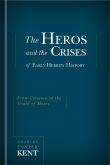
In Kent’s in-depth introduction, where he sets the stage for the great events of the Old Testament, he dedicates entire sections to Babylonian, Egyptian, and Palestinian history. The body of the book treats the earliest narratives of the Old Testament, examining the history of Israel through the death of Moses. Kent takes up individual themes separately—among them, the stories of man’s creation, man’s sin and its consequences, Cain and Abel, and many more. Each of these sections is followed by a short explanatory discussion. Contents include:
- Introduction
- The Beginnings of Human History
- Traditional Ancestors of the Hebrews
- The Bondage and Deliverance from Egypt
- The Hebrews in the Wilderness and East of the Jordan
The explanatory paragraphs are likely to be read by a large constituency, more eagerly than the text itself, while the text will no doubt assume a new and richer significance when thus viewed. In so small compass there is perhaps not so much cogent comparative material to the Old Testament narrative anywhere accessible to the English reader.
—Biblical World
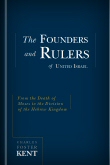
The second period of Hebrew history, with which this volume deals, was Israel’s heroic age—when physical strength, courage, and patriotism were the prominent virtues, but when deeper spiritual and ethical qualities were only partially developed. It was during this period that the Hebrews most resembled their neighbors in character and faith. This volume, which follows the model of the preceding one, follows the history through the division of the kingdom. It commences with the story of the crossing of the Jordan, adding to it—as with other stories—an explanatory discussion. Contents include:
- The Settlement and Conquest of Canaan
- The Founding of the Hebrew Kingdom
- The Decline of Saul and the Rise of David
- The Political Events of David’s Reign
- The Splendors of Solomon’s Reign
Characterized by the same aim, method, and arrangement as its predecessor, it ought to put the student in intelligent possession of the main facts and forces operative in the pre-prophetic period of Israel’s history.
—Biblical World
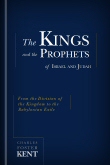
The three and a half centuries that began with the division of the Hebrew empire and extended to the Babylonian exile were in many ways the most important period in Israel’s history. It was during this epoch that the Israelites ceased to be a provincial people, limited in their outlook to the narrow horizon of Palestine. Events over which they had little control brought them into close contact with the great world powers of the day, thereby vastly broadening their faith—as well as their vision of history—and their relationship with the rest of the human race. It was a period marked by supreme political, social, and religious crises, which fundamentally transformed Israel’s religion and institutions. These crises called forth the great ethical prophets of the eighth and seventh centuries BC; their work and teachings made Israel’s experience during these trying years one of the most significant chapters in human history. Contents include:
- The History of Northern Israel
- The Assyrian Period of Judah’s History
- The Last Half Century of Judah’s History
This third volume of the The Historical Bible covers that period in Old Testament history that is richest in literary and spiritual achievements. The volumes are thus to be heartily recommended. They present an adequate translation, illuminating historical notes, and a sane religious application.
—Biblical World
The way in which the history and the prophecy are made mutually illustrative is excellent, and the whole book is likely to be very useful to the student.
—Specialty Magazine
A fitting testimony to the industry and carefulness of Dr. Kent’s scholarship.
—Southern Methodist Review
Professor Charles Foster Kent has performed the task necessary to careful study of the Old Testament, but difficult and involved for all but specialists, of weaving together in chronological order the narratives of the historical books and the sections of the prophetical writings which deal with the same period.
—Nations
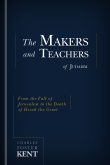
The period represented by this volume is in many ways the most complex and confusing in Israel’s history. The record is that not of the life of a nation but of the scattered remnants of a race. It was inevitable that, under the influence of their varied environment, the survivors of the Jewish race should develop very different beliefs and characteristics. The result is that many different currents of thought and shades of belief are reflected in the literature of this period. While the period following the destruction of Jerusalem was a reflective and retrospective age in which the teaching of the earlier priests and prophets gained wide acceptance, it was also a creative era. Fully half of the literature of the Old Testament—and all of the important writings of the Apocrypha—come from these tragic five centuries.
This period represents the culmination and fruition of the divine influences at work in Israel’s early history. It was during this period that Judaism was born and attained its full development, that Israel accepted the absolute rule of the written law, and that the scribes succeeded the earlier prophets and sages. Out of the heat and conflict of the Maccabean struggle, the parties of the Pharisees and Sadducees sprang into existence and won their commanding place in the life of Judaism. Hence, this period is the natural historical introduction to the study of the birth—and early development—of Christianity. It is also the link that binds the revelation found in the Old Testament to that in the New. Contents include:
- The Exile and Revival of the Judean Community
- The Greek and Maccabean Age
- The Rule of Rome
From the indefatigable pen of Professor Kent comes this fourth volume of his Historical Bible, covering the period of the Persian, Greek, and Maccabean ages, or the rule of Rome down to the reign of Herod. Each section is prefaced by well-written and illuminating paragraphs dealing with the historical situation. The information is all useful and necessary, and unencumbered by learned lumber. There could not possible be a better study than these volumes for busy men who desire exact information about biblical times and literature, but who have no time for technical processes and discussions.
—Homiletic Review
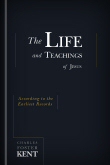
The vividness and consistency of the portrait of Jesus furnished here—in what are recognized as the oldest records in the gospels—demonstrate that this is eyewitness testimony indeed. Through the witnesses’ eyes, we look upon the divine Friend and Teacher of men. As we listen to his words as the witnesses recorded them, we are captivated anew by their irresistible truth. Jesus is surely destined again to draw to himself—as he did in the days of his flesh—the busy men of affairs, who are “bound to the wheel of things” or blinded by ignorance or prejudice, for he has for each of them a plain, practical message that means freedom and happiness and the fullness of life. Contents include:
- Introduction
- The Records of the Life and Teachings of Jesus
- The Early Life and the Work of Jesus
- Jesus’ Fundamental Teachings
- The Culminating Events of Jesus’ Life
The preceding volumes in the series have all dealt with the Old Testament, and the author has met with a growing appreciation on the part of thoughtful men and women of the practical results that have come from the application of modern historical and literary methods to the study of the Scriptures. In the present volume he has sought to embody in a single narrative the oldest records contained in the four Gospels, so arranged as to give a simple, logical, and, as far as possible, a chronological view of the life and teachings of Jesus.
—The American Review
In the first place, the first five chapters of the books are devoted to a most illuminating survey of the sources of our knowledge of Jesus, and done by one whose scholarship is famous for both scope and accuracy. The chapter on ‘The Written Sources Underlying the Gospels’ should be read by everyone who ever has to teach the New Testament. In the second place, not only is the story of Jesus’ life told here, and his ethical and religious teachings examined, but the attitude of Jesus toward his own mission and toward miracles and toward the second coming receive the most illuminating discussion from the most recent points of view.
—Yale Divinity Quarterly
He presents a condensed study of the records of the life and teaching of the Lord Jesus Christ, those outside the Gospels as well as those within, and a good deal that may be known about the sources and comparative value of the Gospels themselves. We have never seen this part of the work excelled in a handbook for classes, such as this is. The deeper Christian experience is enriched and pleased with the emphasis and clearness that attends the presentation of the death of Jesus as the culminating event of His life.
—Record of Christian Life
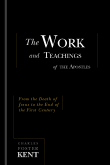
The Apostolic Age is the most complex period of biblical history. Students of the Bible studying the period before the death of Jesus focus on the Hebrew race, but after that great turning point in human history, the focus suddenly goes worldwide. Rome soon takes the place of Jerusalem as the center of Christianity—bringing with it all the history of the great Greco-Roman world. It is during the Apostolic Age that the relatively narrow current of Jewish thought mingles with the currents that flow from the ancient East, from cultured Hellas, and from Rome itself. The mingling of these currents explains the resulting complexity of apostolic life and thought, and the New Testament writings vividly reflect this mingling of civilizations and ideas. In this final volume of The Historical Bible, Charles Foster Kent synthesizes the material from Acts and the material of the epistles chronologically. Contents include:
- Introduction
- The Records and Background of the Apostolic Age
- Primitive Christianity in Palestine and Syria
- Paul’s Work and Teachings
- Christianity During the Second Half of the First Century
We know of no work on the Bible that makes it appear such a vital force among men as does this series, and now that it is completed the student of the Scriptures can get from the constructive modern standpoint a systematic working knowledge of the entire biblical field.
—Boston Transcript
The book makes use of the best and most largely accepted of the critical results of modern study of the New Testament. It puts biblical discovery and research in the most accessible forms. Professor Kent’s comments are masterly and illuminating.
—Springfield Republican
Charles Foster Kent (1867–1925) was born in Palmyra, New York, and educated at Yale, Yale Divinity School, and the University of Berlin. After working as an instructor at the University of Chicago and a professor of biblical literature and history at Brown University, he became Woolsey Professor of Biblical Literature at Yale University in 1901. He was a prolific author and editor, and his works include The Wise Men of Ancient Israel and Their Proverbs, Origin and Permanent Value of the Old Testament, Israel’s Laws and Legal Precedents, and Israel’s Historical and Biographical Narratives.
Reviews
6 ratings

Faithlife User
11/1/2013
James Mills Jr.
10/29/2013

RICHARD A. RAY
10/23/2013

Bill Shewmaker
10/8/2013
Phil Niebergall
7/30/2013

Terry Lawson
7/15/2013